There’s something ironic about the EV revolution, it sells us a utopian vision of clean energy and boundless range, all while reality waits with a headwind and a stopwatch. The Hyundai Ioniq 5, a striking wedge of Korean engineering, is engineered to go toe-to-toe with the Tesla Model Y and perhaps upend the status quo.

But what happens when you stop using these cars for commuting and groceries and start putting them to work, hooking up a camper and hitting the interstate? That’s exactly what one Redditor, “PrivatePilot9,” set out to answer, and his real-world experiment reads like a much-needed reality check for EV enthusiasts and marketers alike.
How Hyundai Aims to Outpace Tesla Model Y
The Ioniq 5 isn’t simply a Model Y chaser, it’s a statement on the E-GMP platform, showcasing retro-futurist styling, an 800-volt electrical system for ultra-fast charging, and a level of quality that takes direct aim at the Silicon Valley darling.
Where the Tesla offers minimalist interiors and “Autopilot” swagger, the Ioniq 5 counters with unique design, clever packaging, and an aura that stands out in the crowded EV field. Hyundai knew that matching specs wasn’t enough, they had to create something with genuine appeal, enough to pry loyalty from the Tesla faithful.
Up to 50 % Efficiency Loss
- Towing a trailer or heavy load with an EV can substantially decrease its driving range. Depending on factors like load weight, terrain, and driving speed, the range can drop by 30% to 50% or more. For instance, towing a large trailer with a Ford F-150 Lightning might reduce its range to just 34% of its maximum, equating to approximately 109 miles.
- EVs should be towed using a flatbed truck to prevent damage. Towing with the wheels on the ground can harm the electric motor and drivetrain, as EVs lack a traditional transmission system. Using a flatbed ensures all wheels are off the ground, safeguarding the vehicle's components.
- Not all EVs are designed for towing. While some models like the Rivian R1T and Chevrolet Silverado EV boast towing capacities of 11,000 lbs and 12,500 lbs, respectively, others like the Tesla Model 3 are not rated for towing. It's essential to consult the manufacturer's specifications to determine an EV's towing capabilities.
On paper, the Ioniq 5 and Model Y look evenly matched, with similar range numbers, comparable size, fast charging, and a tech-forward ethos. But the marketing materials have a tendency to gloss over how range ratings stand up to the American road, especially when towing. While Tesla touts the Model Y’s utility with a family of happy campers on a digital backdrop, Hyundai’s entry dares you to try it for real, and as we’ve learned, there are hard lessons waiting just past the city limits.
That brings us to PrivatePilot9’s odyssey. Here’s a “2022 Preferred RWD long range” Ioniq 5, hitched to a Helio o2,
“A bit of a niche high quality Canadian manufacturer that builds trailers to last... only weighs around 2000 pounds due to its aluminum frame.
But it does however have a fairly stiff wind profile... wind profile is almost 8 feet.”
In other words: light, but hardly a teardrop. At 62 mph, the car handled the load “insanely effortlessly”, at least until the first glance at the consumption meter.
Protecting Motors and Drivetrains
The numbers were humbling according to PrivatePilor9’s,
“First segment, a 50km (~30 mile) stretch east at highway speeds, 100kph (62mph) on cruise control... The end average of the highway segment was 43 kWh/100km. I was actually averaging around 50kwh/100km (ouch!) before I tucked in behind a truck... dropping consumption down to around 40kwh/100km.”
That’s a roughly 60% hit to efficiency, leaving a usable range of only about 100–114 miles before the next charge. For a vehicle that can break 250+ miles unladen, that’s a rude awakening, one that every EV manufacturer, Hyundai and Tesla included, must reckon with.
The Unforgiving Physics of Wind Even mild wind matters. PrivatePilot9 observed,
“Winds were light, around 10kph (6mph) from the west, so I'd have got a small tailwind on leg 1, and a small headwind on leg 2... Any sort of stiff headwind could easily drop the highway range down to 100-125km as efficiency craters at higher speeds, or relative speeds including a headwind.”
Fellow Redditor danielv123 distilled it further:
Advertising “Wind is approximately 100% of your consumption. The rest isn’t really worth thinking about.”
When the numbers get this ugly, suddenly every roof rack, kayak, and oversized mirror seems like sabotage.
Check Manufacturer Ratings Before You Tow
- The IONIQ 5 can tow up to 2,300 pounds (approximately 1,043 kilograms) when equipped with trailer brakes. Without trailer brakes, the capacity is 1,650 pounds (about 748 kilograms). It's important to note that towing is not recommended for the SE Standard Range RWD model.
- Built on Hyundai's Electric-Global Modular Platform (E-GMP), the IONIQ 5 features a low center of gravity and wide stance, enhancing stability during towing. This design supports towing of trailers with a gross vehicle weight rating up to 1,600 kilograms, such as a 6-berth, 7.5-meter caravan.
- While a towing package is not standard, Hyundai offers an optional tow package for the IONIQ 5. This package includes a tow hitch receiver, wiring harness, and other components to facilitate safe and efficient towing.
PrivatePilot9 falls back on a Chevy Volt, yes, really, describing it as “a real sleeper of a tow vehicle.” One commenter marveled,
“This might be the first time in history someone has referred to a Chevy Volt as a ‘tow pig.’”
It’s telling, a discontinued plug-in hybrid is more practical for extended towing than either the Ioniq 5 or the Model Y, largely thanks to the ease and speed of gasoline refueling.
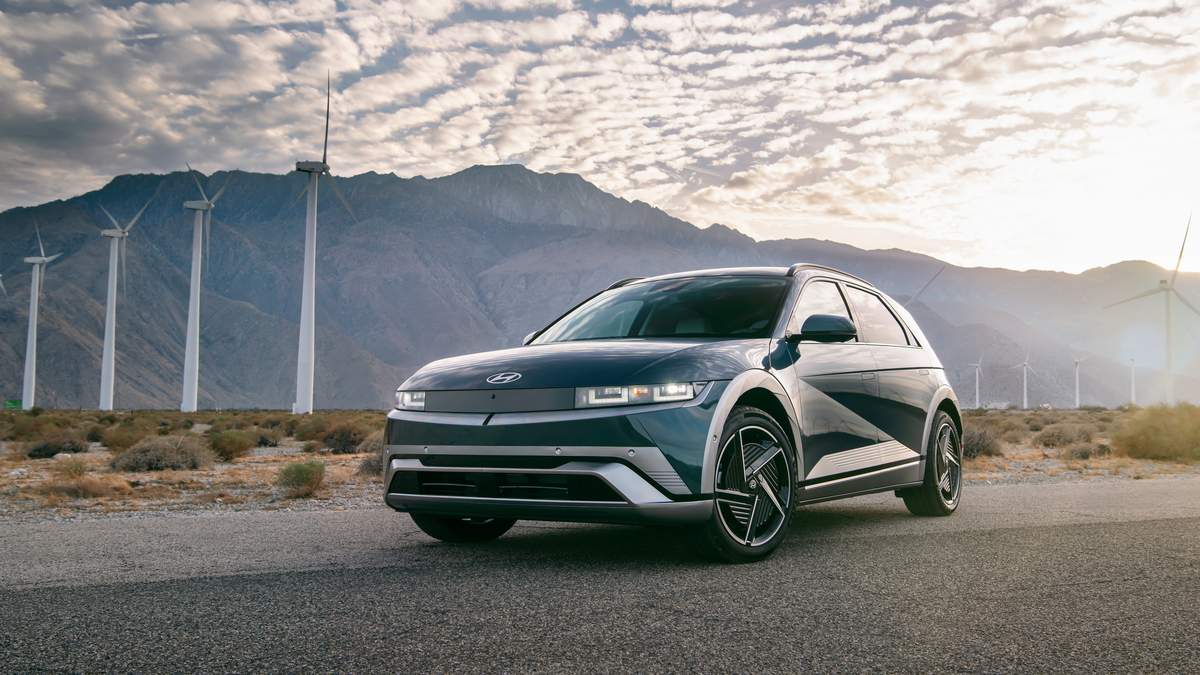
The Volt’s secret weapon?
“They really should have marketed it as ‘electric when you can, gas when you need it’ so people grasped the concept better.”
The harsh truth isn’t just about weight; it’s about wind profile. As PrivatePilot9 writes,
“Wind profile matters way more than many understand... to see basically a ~60% loss of range towing even a smaller aero lightweight style camper, well, it’s eye-opening.”
Across the EV world, aerodynamic drag is public enemy number one. Even non-towing drivers with unused roof racks are reminded that “they might as well have a sail attached to the roof of the car.” Some trailer makers now design with EVs in mind, Polydrops, for instance, shapes its campers like airplane wings to cheat the wind. Enthusiasts tinker with custom fairings and belly pans, fighting physics one watt at a time.
43 kWh/100 km Consumption and 60 % Range Reduction
PrivatePilot9 noticed European EV owners towing heavier “caravans” at lower speeds and reporting much better efficiency. The reason? Strictly enforced lower speed limits, which make a huge difference for electric efficiency. In America, where 70+ mph is the norm and the wind rarely cooperates, the math quickly goes sideways. This discrepancy points to a larger issue: it’s time for automakers and regulators to establish standardized “towing range” ratings, alongside the normal range figures. As Redditor Scared-Delivery-2125 put it,
“At a steady 55-60 mph, I average only about 1.5 mi/kwh -- about a 60% hit compared to driving without the trailer at that speed... Makes it impractical for me to tow more than 70-75 miles at highway speeds, charging 10-80%.”
As PrivatePilot9’s story reveals, the brochure numbers are only half the story. If you plan to tow, physics and infrastructure are waiting to ambush you. Until “tow range” is a number you can actually compare, every family road trip is a gamble.
Have you ever used your EV to tow your camper? How did it turn out, and were you happy with the range?
Tell us in the comments below.
Noah Washington is an automotive journalist based in Atlanta, Georgia. He enjoys covering the latest news in the automotive industry and conducting reviews on the latest cars. He has been in the automotive industry since 15 years old and has been featured in prominent automotive news sites. You can reach him on X and LinkedIn for tips and to follow his automotive coverage.


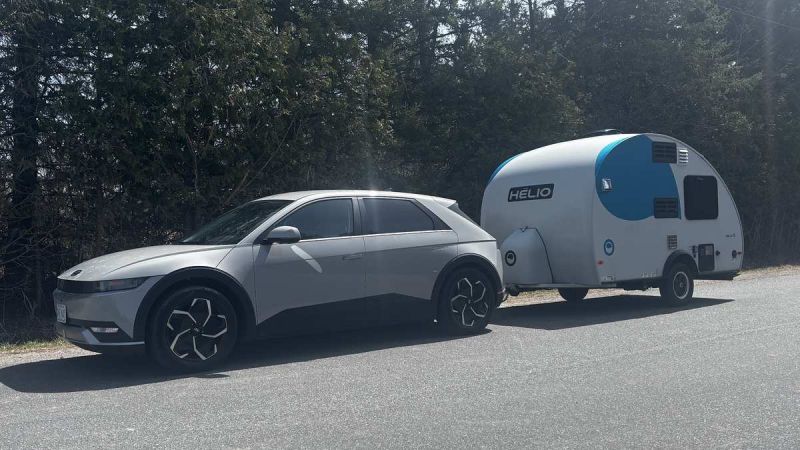






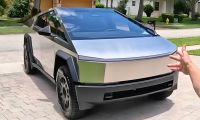
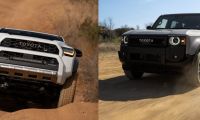

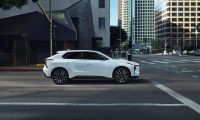
Comments
How much gas efficiency do…
Permalink
How much gas efficiency do you lose when you add weight or try to tow something? Obviously gas has a higher capacity but this article goes a very long way of saying what should already be obvious... More weight means more energy requirements.
What's the comparable range…
Permalink
What's the comparable range impact on an ICE vehicle when towing one of these trailers?
I pull a Road Toad teardrop…
Permalink
I pull a Road Toad teardrop with my Prius which cuts the range from 450 to 300. I heard that the range for a Model 3 drops similarly for the Road Toad. I am waiting for ranges over 400 miles and charging stations closer together, well and faster to charging before switching to an EV.
That camper is tiny. EVs are…
Permalink
That camper is tiny. EVs are such an impractical joke.
Ummm, duhh... Sorry, but 60%…
Permalink
Ummm, duhh...
Sorry, but 60% isn't actually that bad. Good luck finding a charger every 60 miles though...
If I tow a box of feathers in my F-150 I go from 17 mph mixed or 20 highway, down to 9 (yes, NINE).
If I tow 60-70% of my max of 14,500 at 60-65 mph I get, 6. For real, 6 mpg.
It's astonishing.
70% reduction, and that's with a gasoline powered truck that's "designed" to tow.
6
I guess I'll see you at the next has station...
The details about towing an…
Permalink
The details about towing an electric vehicle are not related to the use of an electric vehicle for towing. Proof your information before you post.
Towing lowers efficiency who…
Permalink
Towing lowers efficiency who knew?
I own a 2019 F150 XLT which…
Permalink
I own a 2019 F150 XLT which is advertised as getting 24 miles per gallon at highway speeds. When towing my 4000 pound camper I've had my gas mileage drop as low as 8.8 miles per gallon. Roughly a 63% drop in fuel economy or you could call it a 63% drop in range. I'm sure wind resistance is the culprit. But my F150 has a 36 gallon gas tank or a range of 864 miles at 24 mpg. But at 8.8 mpg it's 316.8 miles. Not bad.
Another problem when towing with an EV is that very few charging Stations, at least not in the midwest, are drive through setups, a necessity when towing. But most electric posts at campgrounds have a 50 amp plug-in (Nema 14-50). I'm guessing you could plug in your EV there.
My wife's car is an EV and we love it.
I guess you Ev kooks are…
Permalink
I guess you Ev kooks are going to have to learn the expensive and hard way